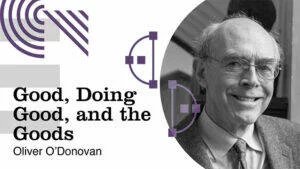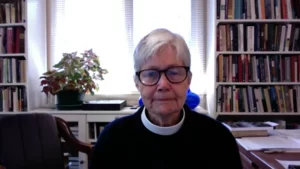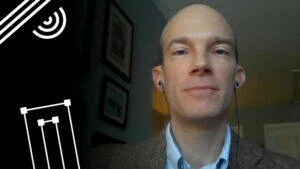I never asked to be associated with Evangelical Christianity, but I was born and bred in it. I know its virtues and, sadly, its ugly vices all too well. Graduating from Trinity College felt, despite what I learned there, like liberation, a chance to finally define myself.
An Inescapable Origin
For the first several months after graduation I was at pains to avoid bringing up my religious origins with new friends and colleagues. I wanted desperately to be my own man, but I quickly learned that I couldn’t escape my past. When I met new people, our small talk usually began with innocent questions about where I went to school, and the cat was already out of the bag. Too often I reacted defensively and found myself speaking with more vehemence against my Christian background than I meant to. I needed to reconcile myself in some way to a past that still defined me. That’s why I tattooed a line from the Inferno along my right side:
Raphèl maí amèche zabí almi
As a college student struggling to understand God and human nature, one of the most impactful books I read was Dante’s Divine Comedy. It seemed like a natural choice, given how many references I’d seen to the Inferno in other books. I hoped that reading the epic might help me understand general ideas about what it means to live. But to my surprise, my main takeaway from reading the poem wasn’t a broad concept; it was one specific image, which I now have written permanently along my ribs.
Of course, the obvious question is, “Why that line? What does it mean?” When I show the tattoo to my friends, they naturally ask me the same things. And I have nothing to tell them, because, even in the original text, the sentence is utter gibberish.
In Canto XXXI of the Inferno, Dante the pilgrim and Virgil his guide stumble upon several massive giants in chains guarding the ninth circle of hell, where the sin of treachery is punished. Dante regards one giant in particular, who bellows the sentence: “Raphèl maí amèche zabí almi.”
Virgil responds, yelling (in Henry Wadsworth Longfellow’s translation),
. . . . . . . . . . . . . . . Soul idiotic,
Keep to thy horn, and vent thyself with that,
When wrath or other passion touches thee.
Then, to Dante, Virgil says,
. . . . . . . . . He doth himself accuse;
This one is Nimrod, by whose evil thought
One language in the world is still not used.Here let us leave him and not speak in vain;
For even such to him is every language
And his to others, which to none is known.
I was so struck by this exchange initially, but I wasn’t sure why. I also didn’t know who Nimrod was. So, I looked him up.
Nimrod’s Essential Sin
Genesis 10 depicts the descendants of Noah after the subsiding of the flood. Noah’s son Ham fathered Cush, who fathered Nimrod. Many extra-biblical sources identify Nimrod as the king presiding over the construction of the Tower of Babel. In some mythologies, Nimrod repents after God’s judgement; in others, he dies a villain. One trait remains consistent among these various characterizations: Nimrod’s original disposition of rebellion against God. It could be said that Nimrod is the personal manifestation of Babel’s worldview.
What is the Tower of Babel? According to the English Standard Version, Genesis 11 depicts its planners contemplating “a tower with its top in the heavens,” saying “let us make a name for ourselves, lest we be dispersed over the face of the earth.” This directly contradicts God’s post-flood command in Genesis 9 to “Be fruitful and multiply, teem on the earth and multiply in it.” God responds to the builders in chapter 11 by saying, “Behold, they are one people, and they have all one language, and this is only the beginning of what they will do. And nothing that they propose to do now will be impossible for them. Come, let us go down and there confuse their language, so that they may not understand one another’s speech.” And God does so, dispersing them over the face of the known world.
This is why Nimrod is the first face encountered in the ninth circle—a circle which ends with Satan in chains. This is the circle of treachery, of the treasonous, and Nimrod stands at the inception of the lowest and darkest realm of Dante’s infernal structure.
It seems fair to say that this extended sense of “treachery” is the ultimate sin for Dante. While I certainly believe that the crime of Satan is linked to that of Nimrod, I don’t much respond to the word “treachery” as a label. It might be because I live in a more individualistic, less nationalistic world than Dante. I rank many qualities in myself above my identification with America, and I don’t identify with any particular religion or political party. So I read Nimrod’s sin—and, by extension Satan’s and the ultimate sin of the Bible—as the presumption of reaching beyond one’s divinely established authority and essence.
The story of Babel has always left a strange impression on me, especially concerning this “crime against authority and essence.” Humankind—in an attempt to upset the system of authority reinforced by God through the flood—erects a tower, a physical monument representing humanity “making a name” for itself. In the first ten chapters of the Bible, humans have only named animals, geographical locations, and their children (whom God occasionally renames when he sees fit). It is God who “makes a name” for humanity, who establishes its identity. He alone wields the authority to define the human essence. When humanity tries to do so for themselves, God intervenes to restore His order, forcing them to follow his earlier command.
For me, Dante’s Nimrod is the absolute essence of what it means to sin. Consider Eve, whose sin was grounded in a mistrust and dissatisfaction with the established order in Eden. She attempts to reject and re-establish this hierarchy to her own liking—to possess knowledge reserved for God’s knowing, to make decisions reserved for God’s making. Consider Satan, who sought to transcend his role as the beautiful archangel and sit in the throne of God.
Marked
Dante’s Nimrod speaks a language spoken only by himself. Thus, “Raphèl maí amèche zabí almi” functionally means nothing. Nothing, that is, beyond what Nimrod represents: Babel, a monument glorifying the logic of the angelic Fall in heaven and the dreams of the human Fall in Eden. This is why Virgil’s only comment on the utterance is “He doth himself accuse,” and later, “Here let us leave him and not speak in vain.” Literary critics have debated the meaning of Nimrod’s line for years, but Virgil knows that its only useful interpretation is self-accusation.
So I got the tattoo. No matter who I am or what I believe in ten years, I want to remember that Evangelical Christianity was my all-consuming context until early adulthood. It’s a context from which I’ve tried to escape, even though I know it will always be a part of me. And I know that I, like Nimrod, have worked all too hard to purposefully define myself apart from that context. When I lived within it, Dante gave me some of the most helpful terms and images to help me understand my reality. And as I live without it, I never want to forget those terms and images. They still help me define myself.
When I deny the world I was raised in, I’m full of assumptions and void of answers. When I try to fully abandon my past, I lose myself fully. And I am brought back only when I catch a glimpse of my tattoo in the mirror. It whispers my own self-accusation, reminding me that all of my most articulate declarations, passions, and prayers throughout my life can be summarized in five words: “Raphèl maí amèche zabí almi.”








Comments
Be the first one to make a comment!